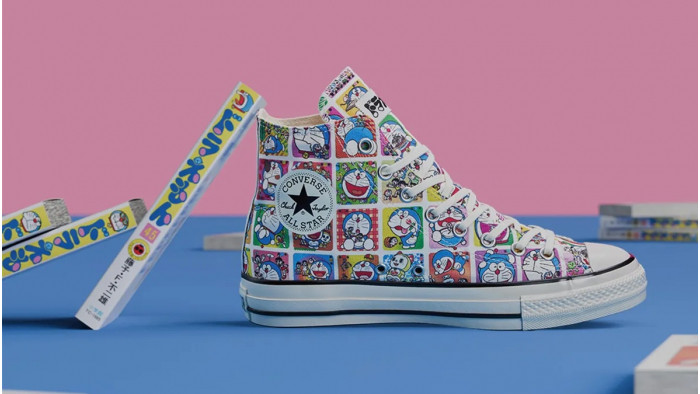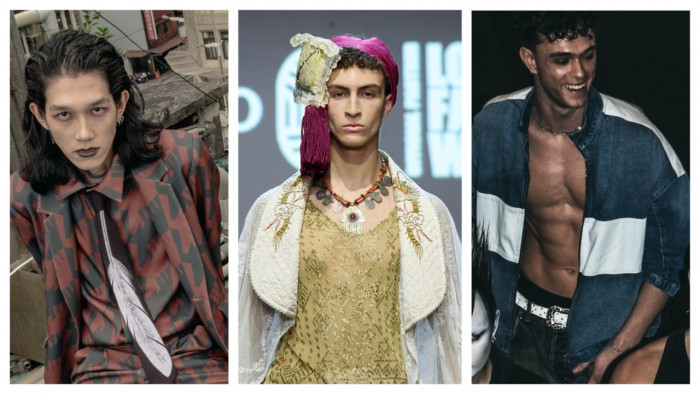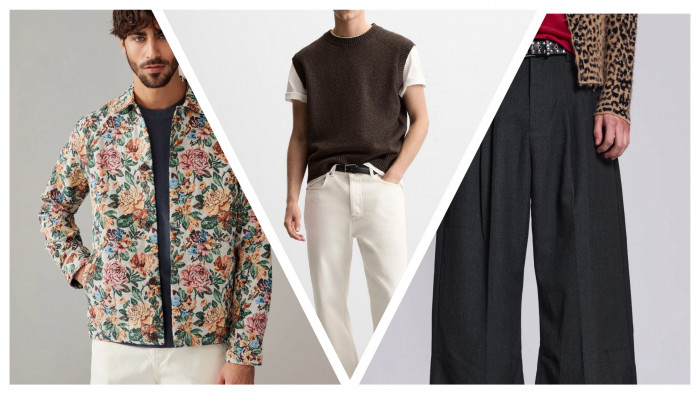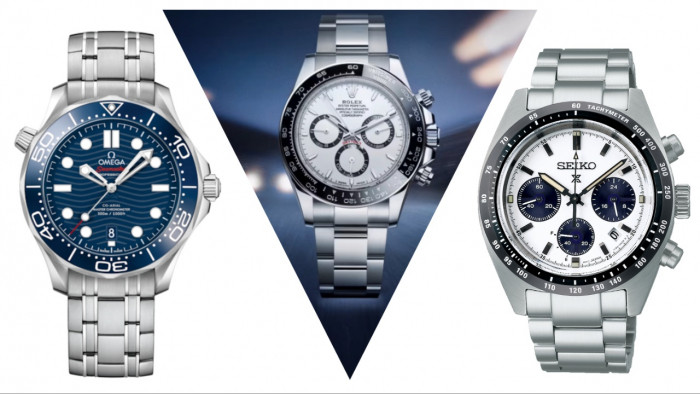"Omg girl I love your sneakers": Investigating the murky world of CGI influencers in fashion
The rise of the machine muse


When was the last time you referred to the internet as “the internet”?
Our lives are now so inextricably intertwined with being online that divisions between us and the web have all but vanished. If you told a friend that you’d booked a weekend away or got in touch with a schoolmate, detailing that you did so “on the internet” would feel superfluous.
The line between people and pixels is blurred and growing blurrier. Cryptocurrencies are used to buy everything from flat whites to hit-jobs. Free-to-play games generate billions charging us for spells, spaceships and
Poké Balls – none of which exist in any real sense. Viral fictions inspire dimwits to open fire in restaurants, believing themselves the hero of a story in which Hillary Clinton runs a child sex ring.
Equal parts unnerving and entertaining, this encroaching Black Mirror-isation has hit the fashion industry in the form of CGI influencers: photorealistic fictional models with hyper-aspirational lifestyles and cult-like social-media followings. They’re hot, worshipped and lucrative, and their impossibly perfect faces may just be the future of fashion.

Shudu with Zhi and Margot
Lil Miquela is two things: a string of zeroes and ones, and the apex of Gen-Z cool. Born on Instagram on 22 April 2016, she’s since amassed 1.4 million followers, the majority of whom interact with her as if she were flesh and blood. Posting adoring comments such as, “Omg girl I love your sneakers, where you get them?”, Miquela’s fans close the loop, playing along to make her feel real.
She’s always pretty and poised, draped in on-trend pieces from the likes of Chanel and Prada. Miquela’s (real-life, full-time) agents coordinate the gifting of clothes from brands desperate to win her approval. At just two years old, she’s already way cooler than any of us mere mortals.
“Lil Miquela is great, isn’t she?” says Nick Eley, head of menswear design at Asos. “She’s all part of the fun of fashion, of pushing things along. She poses some really interesting questions, and I love all the mystery and intrigue surrounding who’s behind her.”
“She’s cool,” agrees Michael Mayren, owner of Brother Models. “CGI influencers are an exciting new artform. The fashion industry is big and things get boring if everything stays the same. There’s room for all kinds of models.”
Created by California-based artists Trevor McFedries and Sara Decou, Lil Miquela initially appeared to be little more than a mischievous art project. The duo, however, swiftly expanded to become Brud – a tight-lipped, double-digit start-up that declined ShortList’s request for an interview.
Initially, it wasn’t clear how Brud was planning to monetise Lil Miquela: profiles in Vice and Vogue generated buzz, but didn’t pay any bills. That didn’t prevent the company from pocketing a reported £4.6m in funding from capital investment firms, however.
Early investors are already seeing returns: Miquela’s merch – emblazoned with such slogans as “Stop Texting Me” and “Uncanny Valleygirl” – sells out without fail. In February, she ‘attended’ Prada’s Milan show and announced the launch of the brand’s Instagram Gif collection. Her second single, the Charli XCX-esque ‘Hate Me’, recently dropped; her first, ‘Not Mine’, has 1.5m plays on Spotify. She’s in Vogue’s September issue, ‘writing’ about chic tech that “sets her digital heart racing”. And then there are the modelling jobs for V, Paper and King Kong – the last of which saw Miquela exposing her bum cheeks on the cover.
So, what’s next? Could holographic catwalk appearances be on the cards? “I think so, yeah,” says Mayren. “Using CGI models such as Lil Miquela opens up endless possibilities. It won’t replace human models, but a tool that certain designers will use as a point of difference.”
Surfing the wave, Brud has expanded its roster. The Miquela-verse now includes Miquela’s friend Ronnie Blawko – a perma-masked streetwear-and-sneakers obsessive – and Bermuda, Miquela’s Wasp-y, pro-Trump rival. Bermuda was launched via a dramatic storyline in which she ‘hacked’ Lil Miquela’s Instagram account, refusing to relinquish it until Miquela admitted that she wasn’t real – pot, kettle – which Miquela then did, via an emotional outpouring that inspired surreal messages of support from her fanbase. “You’re a robot physically,” went one, “but everything else is human!”
Predictably, rival CGI influencers are now emerging, with the UK producing two of the most buzzed-over: Shudu and Lil Wavi. The former is an uncannily photorealistic model whose USP is her dark skin; the latter a lo-res ‘hypebeast’ whose Instagram glows with the gaudiest of gear from Off-White and Gucci.
“As more brands jump on the Lil Miquela thing we’ll see greater numbers of these influencers appearing,” says Eley. “That’s going to dilute the magic, and I don’t know if we’ll see any as big as this first wave. But then a few years ago you could have said that about human influencers – and there are now enough of them making a living.”

Lil Miquela
Some observers have pointed out the #problematic aspects of CGI influencers: chiefly, issues surrounding race and objectification. Having been created by 28-year-old white British photographer Cameron James Wilson, Shudu and Nfon have been decried as “racial plagiarism” by Minh-Ha Pham, a Pratt Institute professor specialising in intersections between race, gender and capitalism.
Complicating matters further, when Shudu and Nfon first emerged, many were unaware that they are not, in fact, real. When Rihanna’s Fenty Beauty brand featured Shudu in its #melanin and #blackbeauty social-media campaign, some questioned whether or not the company realised exactly who – or rather what – they were endorsing. While Wilson never overtly sought to pass Shudu and Nfon off as human, he’s since taken to pointedly labelling their posts as “#3Dart”.
Then, in August, Balmain announced that Shudu was to become an official face of the brand, alongside all-new CGI models Zhi and Margot. Creative director Olivier Rousteing declared Balmain was seeking to “present diversity in the world”. But with a white man, rather than a black woman, ultimately getting paid, the resulting backlash was as swift as it was unsurprising.
Whether by accident or design, Brud has sidestepped accusations of appropriation by making Miquela and Ronnie impossible to pinpoint racially. (Trump-troll Bermuda is as Caucasian as Caucasian gets.) Miquela Sousa – to use her ‘full’ name – is Brazilian-American, a hedge-betting nationality that covers a panoply of ethnicities.
“It’s impossible to say what Lil Miquela’s background is,” says Asos’s Nick Eley. “[As for] whether that’s right or wrong, I don’t know. You could argue that CGI influencers should be given a proper identity, rather than simply being a fusion. But I guess they’re trying to be as inclusive as possible.”
For his part, Ronnie Blawko took to Twitter to address the issue in typically high-minded fashion: “Stop askin forr my race i already told yall im Cockasian.”

Blawko
Ronnie, of course, can’t actually tweet. He – it – is an empty vessel, a doll that would fall silent without Brud. The company bills itself as specialising in AI, but for the time being such claims are just another plot point within the grand story that the company is weaving: see Lil Miquela sorrowfully disclosing to her followers the dawning realisation that she’s an AI, with an existential yearning for emancipation from her creators.
Granting CGI influencers some degree of AI autonomy would, though, seem to be the next logical step (insofar as any of this could be described as ‘logical’). Unfortunately, given current technological constraints, any such personas would be feebly shallow – even, meow, by Instagram-influencer standards.
“You could show an AI the season’s clothes and it could pick out pieces to wear,” says Chris Boos, CEO of AI company Arago. “That’s fairly easy to achieve. But while that AI might seem alive, it’s actually pretty mechanical. It might look like it’s thinking about what to wear to a party, but that’s not what’s happening. We don’t yet know enough about how consciousness works to convincingly synthesise it.”
Boos says an AI could be taught to design clothes, meaning an emancipated Lil Miquela could create her next merch collection. Again, though, the results would be lacking.
“Fashion thrives on designers pushing boundaries with out-there ideas,” says Boos. “But an AI is always an optimiser, so an AI designer would likely produce a string of very similar designs, from a narrow mindset.
“Creativity is impossible for an AI. There are too many parameters. All you could do would be to add in randomness, but as I’m sure any designer would tell you, there’s far more to creativity than randomness.” Safe to say, the next Karl Lagerfeld or Virgil Abloh probably isn’t ticking over on a server right now.
What an AI can do well, however, is foresee upcoming trends through inhumanly deep global analysis. “You have people in fashion who have fantastic instincts: gut feelings about what will or will not sell,” says Boos. “Reproducing that gut feeling, synthesising intuition – that’s something AI can do. It can travel the world, observing new trends and gauging opinions in order to make decisions. And it can do so on a huge scale: while a person can only visit one country or observe one market at a time, an AI can be in 50 places at once.
“When we reproduce these people, we ask them questions such as, ‘Why do you think this trend will be big in this particular market?’ And then we’ll take their reasoning and feed it into the machine, so that it can create valid arguments for its decisions.”
Harnessing AI in this way could prove beneficial to brands at every level of the industry. Within fast fashion, which operates at huge scales, misjudged trend predictions can prove catastrophic – see H&M, which earlier this year admitted to sitting on £3.3bn of unsold stock. And for high-end labels, discounting unpopular pieces is viewed as brand-damaging – see the gossipy schadenfreude that arose from Vetements’ slashing of its prices in spring.
“You’ll soon see these AI services used everywhere,” says Boos, “even by small brands. But it will all be behind closed doors. I can’t foresee a label announcing that its latest collection has been picked by an AI.”
Many followers are happy to take style cues from Miquela and her fellow CGI influencers while they remain under the control of their human creators. But if they were to start offering independent insights into what the Next Hot Thing might be, would their followers still be receptive?
“Serious fashionistas will turn their noses up at AI’s trend predictions,” says Boos. “But that’s good, as they’ll create independent data sets for AIs to study, so that they aren’t only feeding off other AIs. It will provide unexpected behaviour, which is what makes fashion – and life – interesting.”
It will also make it tricky to ascertain just how much control these covert AIs are exerting over the industry. So when the zeroes and ones do start influencing your wardrobe, you won’t even be aware that it’s happening.
(Images: Instagram)








